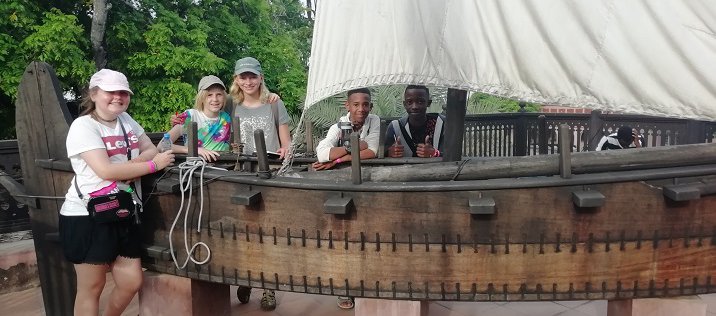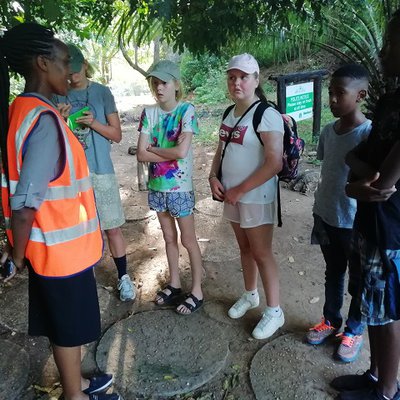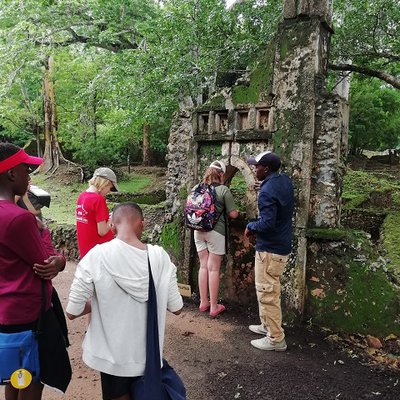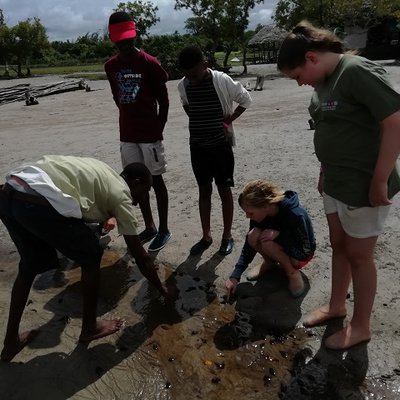Coastal Retreat

15th June 2019
Last week, the Year 8 pupils headed to the coast to reinforce their learning around coasts during Geography, the Portuguese and Arab occupation at the coast in History, Adaptation and Ecosystems in Science and Wood carving and Heena decoration in Art, Design and Technology. In advance of the trip they came up with very good enquiry questions to help them find out more about the Portuguese and Arab influence at the coast and its impact on the establishment of the Swahili Culture. During the trip, they made good links to other areas of learning as the opportunity presented itself.
At the end of the trip, the children reflected on the experience...
My most exciting experience was climbing the “Indiana Jones” rope bridge overlooking the ocean at the Mida Creek; a Broadwater tidal creek surrounded by extensive mangroves. It was exciting because of how dangerous and risky It felt. I learnt about the different types of creatures which inhabit the creek and how they balance the ecosystem. Mangroves are trees that grow in water. (Isobel)
I found out that Fort Jesus was built at the end of the 16th century in the shape of a human being and named after Jesus. This is because it was first built by the Portuguese who were Christians hence, the name Jesus. It is one of the most outstanding buildings on Mombasa island and strategically built on the coral ridge at the entrance of the harbour to spot the enemy (then). The Oman Arabs and the British too conquered the Fort. (Gerald)
I was intrigued to learn about the Arab influence on the development of the Swahili Culture and way of life at the Gede Ruins. At the museum, there many unique mosques, with different architectural designs but united with the same purpose; to worship Allah. This reminded me of my old home in Siwa, Egypt. (Electra)
I was excited to learn how the Haller park was established to reclaim the Bamburi Cement quarry. Most of the plants and animals at the park have adapted to the weather and climate at the coast. For example, the Casuarina tree or whistling pine, have very thin leaves to reduce the rate of water loss and their roots have root nodules which have bacteria to fix nitrogen in the air. (Evie)
One of the distinct Swahili architecture features is the curved wooden door, developed in the 1800s. Prior to that, I learned that these designs were shipped from Zanzibar, India and Oman. I used my knowledge of measures and geometrical patterns to design a pattern that l carefully carved out using a mallet and chisel. This was challenging but the results were fulfilling. (William)
Thank you to all our hosts for the warm welcome the group received everywhere they went and also to Mrs Wangili for accompanying the group for their final, extremely memorable trip as students at BNIS.











